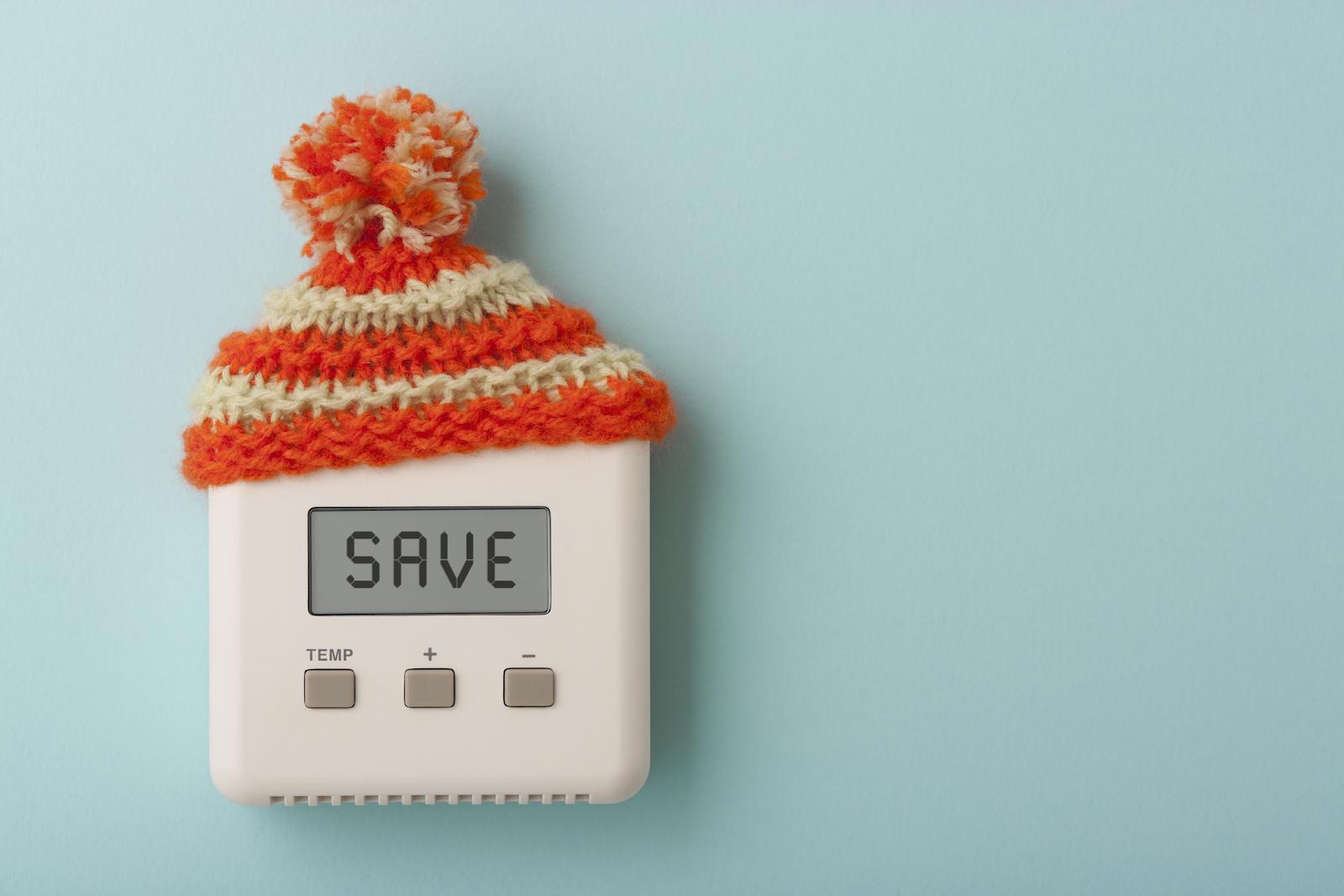What is the Best Temperature to Set My Thermostat in Winter to Save Money?
Find out the best temperature to heat your home and more ways your thermostat can help save you money this winter.
As the temperatures begin to cool, determining the best temperature for your heater in winter and striking that delicate balance between staying comfortably warm and managing expenses can become a struggle. This challenge is amplified when you're sharing a living space with others who may not align with your preferred winter thermostat setting. The ongoing thermostat battles can lead to tension and energy wastage, and we can help.
Discover the best temperature to set your thermostat in winter to save money– where comfort, cost-efficiency, and energy savings come together, keeping your home at the best temperature for the winter.
Balancing Comfort and Efficiency with Your Winter Thermostat Setting
Do the cooler temps have you wondering, “What should I set my heat to?” According to ENERGY STAR, the magic number for your winter thermostat setting is 68 degrees Fahrenheit when you're at home. This temperature strikes a perfect balance between staying comfortable and saving energy.
A temperature of 68 degrees Fahrenheit is often considered the best temperature to set thermostat in winter to save money. But why is 68 degrees the best winter thermostat setting? In winter, heat loss through walls, windows, and doors is a significant contributor to energy wastage. At 68 degrees, your heating system provides enough warmth to counteract this heat loss. This means that you're efficiently maintaining a comfortable temperature indoors without unnecessarily overheating your home – a practice that would drive up your energy bills.
Additionally, studies have shown that this temperature strikes the right balance between warmth and coolness, satisfying the thermal preferences of most people. It's not too chilly that you find yourself reaching for multiple layers of clothing, and it's not so warm that you start feeling stuffy and uncomfortable.
Optimize Your Thermostat Placement for Winter Temperatures
Knowing the best temperature to set thermostat in winter to save money won’t matter if your thermostat is placed haphazardly in your home. To make the most of your efforts, position the thermostat on an interior wall, ideally near the center of your abode. This strategic location ensures that the thermostat accurately reflects the overall temperature of your living space. Moreover, take into account the high-traffic rooms, as these are the areas where you want the temperature to be most conducive to comfort.
To achieve the best temperature for heater in winter, choose the right spot for your thermostat and steer clear of the following areas to ensure accurate temperature readings:
- Direct sunlight-exposed spots
- Locations above air vents
- Kitchens, where cooking heat can skew readings
- Hallways, as they might not represent the true home temperature
- Proximity to doors or windows, which can be drafty and misleading
The Energy-Saving Advantage of Adjusting the Thermostat
When your heating system operates, it generates heat to counteract the cold air infiltrating your living space. The larger the difference between indoor and outdoor temperatures, the harder your heater has to work to maintain the desired warmth. At 68 degrees, the gap between indoor and outdoor temperatures is moderate, allowing your heating system to operate efficiently without unnecessary strain. Contrary to common misconceptions, frequent temperature fluctuations or disregarding optimal settings can actually result in higher energy bills over time.
Not only does the right setting save energy, a subtle adjustment in your thermostat setting can lead to substantial savings. By dialing down the thermostat 7-10 degrees Fahrenheit for about eight hours a day, you can potentially reduce your annual heating and cooling expenses by up to 10 percent.
Even within the context of the 68-degree setting, there's room for strategic adjustments that can yield significant savings. For instance:
- Nighttime Savings: When you're tucked into bed, your body's lowered activity level means you require less warmth. Lowering the thermostat by a few degrees during the night can lead to substantial energy savings without compromising your comfort.
- When You're Away: If you're leaving your home unoccupied during the day, reducing the thermostat setting further can prevent energy wastage. Program your thermostat to raise the temperature just before you return, ensuring a warm welcome without unnecessary heating.
Maximize Savings with an Upgraded Thermostat
Today's advanced heating and cooling systems are designed to offer whole-home comfort while being energy-efficient. The key lies in the energy-saving practice of lowering the thermostat by around 10-12 degrees Fahrenheit (or 6-8 degrees Celsius) during nighttime or when the house is vacant.
While manual adjustments are an option, programmable or "smart," thermostats can be your allies in achieving energy efficiency, particularly when you're away from home. A programmable or smart thermostat can work on your schedule and adjust temperatures to when you are home or away.
Programmable Thermostats: Precision and Control
Programmable thermostats empower you to set various temperature preferences throughout the day, tailored to each day of the week. Although they offer remarkable benefits, their effectiveness depends on adhering to proper usage. Frequent temperature adjustments can negate the potential savings, so consistency is key to reaping the rewards of programmable thermostat technology.
Smart Thermostats: The Future of Comfort
Upgrading to a smart thermostat totally removes the human element and ensures your home is always set to the temperature you want at the time you want. These futuristic devices offer more than just warmth; they learn your lifestyle patterns and automatically optimize the temperature for maximum efficiency and energy conservation. Smart thermostats can be controlled remotely, provide real-time performance alerts, and can even feature customizable digital displays. Whether you're at work, on vacation, or simply on the go, you can effortlessly manage your home's temperature and settings. They can also integrate seamlessly with other smart home appliances, granting you unparalleled control over your living space.
For instance, the Trane ComfortLink™ II XL1050 offers a comprehensive suite of features to enhance your comfort and savings. Designed to integrate cutting-edge technology with your lifestyle seamlessly, this smart thermostat empowers you with precise temperature control, energy efficiency, and remote management capabilities. The ComfortLink™ XL1050 is more than just a thermostat; it's your personal comfort command center.
Investing in System Efficiency for Long-Term Gains
Even if you diligently adjust your thermostat for winter thermostat settings, your efforts might go in vain if your heating system isn't operating efficiently. Taking small steps like consulting an HVAC expert to inspect your unit can reveal hidden efficiency issues. Problems like leaky air ducts, inadequate insulation, or clogged filters can impede your system's performance.
If you're considering a system upgrade, keep in mind that Energy Star-certified systems with high SEER, AFUE, or HSPF ratings can boost efficiency by up to 15 percent compared to older models. These modern systems also provide improved comfort with multiple or variable heating stages, maintaining a consistent temperature and minimizing energy wastage.
Contact an Expert
Your local Trane Comfort Specialist can help you discover the best temperature for heater in winter. Their expertise can offer you a personalized evaluation of your home's heating and cooling system, guiding you toward a harmonious blend of warmth, comfort, and energy savings. Remember, achieving the perfect winter thermostat setting isn't just about numbers – it's about striking a balance that keeps you snug, your wallet happy, and the environment cared for.




